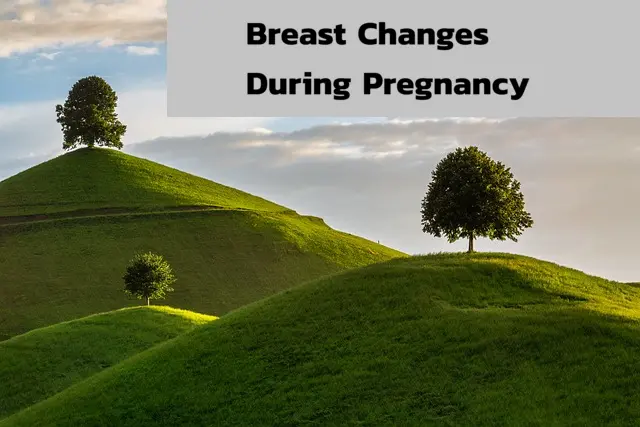Changes in the size and shape of the breasts, the appearance of veins or darkening of the areolas – all this causes not only worry for pregnant women, but sometimes panic. Although, in fact, in most cases it is safe and you just need to adapt to it.
Increased Breast Size
During pregnancy, a noticeable change in a woman’s body is the growth of her breasts. This occurs due to hormonal changes that allow for milk production. In addition to the increase in size, women may also feel pain, sensitivity, and a sense of fullness and weight in their breasts. It is important for expectant mothers to understand why their breasts are getting bigger and how it can affect both themselves and their baby. To ensure comfort and overall well-being for both, here are some recommendations for taking care of the breasts during pregnancy.
Darkened Areolas and Nipples
Throughout pregnancy, numerous women undergo alterations in their breasts, which entail the darkening of both the areolas and nipples. This is a frequent happening that can be attributed to heightened hormone levels within the body. Here are a few primary explanations for the occurrence of darkened areolas and nipples during pregnancy:
- Hormonal Changes: The darkening of the skin around the nipples can occur due to heightened hormone levels, specifically estrogen and progesterone.
- Increased Blood Flow: The areolas and nipples may darken during pregnancy due to an increased blood flow to the breasts.
It’s important to note that these changes are normal and typically do not require medical attention. However, if you notice any unusual or concerning symptoms, such as severe pain or discharge from the nipples, it is recommended to seek medical advice.
Veins on the Breasts
During pregnancy, many women experience changes in their breasts, including the appearance of blue veins. This is a normal process caused by an increase in blood flow to the breasts as the body prepares for breastfeeding. Hormonal changes during pregnancy can also make the veins more noticeable and prominent. Despite these unusual changes, veiny breasts during pregnancy should not be a cause for concern.
Tender and Sensitive Breasts
Pregnant women frequently encounter sore and sensitive breasts, leading to feelings of discomfort. Several typical indicators include:
- Increased breast size and fullness
- Swelling and enlargement of the nipples
- Tenderness and soreness
- Darkening of the areolas
To alleviate discomfort and pain associated with tender and sensitive breasts, consider the following tips:
- Wear a supportive bra that offers proper coverage and fits well.
- Use warm or cold compresses to relieve soreness.
- Apply a gentle moisturizer to soothe dry skin.
- Avoid harsh soaps or lotions that may irritate the skin.
Keep in mind that changes to the breasts during pregnancy are normal and only last for a short period of time. If you have any worries or notice any unusual symptoms, it is crucial to seek advice and reassurance from your healthcare provider.
Colostrum Production
Throughout pregnancy, a woman’s body experiences various transformations, with one of the most prominent being a change in the breasts. One significant change is the secretion of colostrum, which refers to the initial milk produced by the breasts following childbirth. Colostrum is a dense, yellowish liquid filled with crucial nutrients and antibodies, thus promoting the health of the newborn. This production of colostrum is a natural occurrence driven by hormonal shifts during pregnancy.
The act of producing colostrum is a crucial phase in getting ready for breastfeeding. It aids in the transition from colostrum production to mature milk in the breasts. This typically happens shortly after giving birth, typically within a few days. Colostrum not only delivers essential nutrients to the newborn but also assists in building a robust immune system. It is advisable to seek guidance from a healthcare professional or a lactation expert to gain more knowledge about colostrum production and breastfeeding methods to ensure a prosperous breastfeeding experience.
About the Author
Reyus Mammadli is the author of this health blog since 2008. With a background in medical and biotechnical devices, he has over 15 years of experience working with medical literature and expert guidelines from WHO, CDC, Mayo Clinic, and others. His goal is to present clear, accurate health information for everyday readers — not as a substitute for medical advice.







